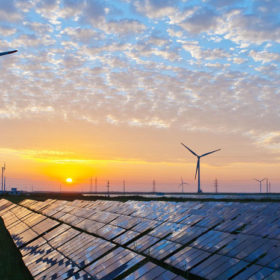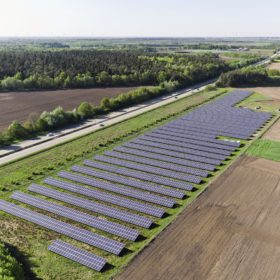How corporates are leading the 100% renewable energy transition
An historic new report from Energy Watch shows that we can reach 100% renewable energy in just a few decades, and it’s affordable; making this the clear answer to tackling climate change.
China’s new solar FIT policy
On April 30, China’s National Development and Reform Commission released the “Improving Issues Related to Feed-in Tariffs for Solar Photovoltaic” notice, the first document that confirms the level of FIT payments for solar projects following several consultation papers issued previously this year. The new FIT rates are set to be effective starting July 1.
A guide to the world’s largest solar power stations
In the first of a short series of blogs, solar energy pioneer Philip Wolfe highlights the differences between solar farms, solar parks and clusters, in order to identify the world’s largest solar power stations.
Bifacial module demand continues to grow
Module technologies such as bifacial, half-cut, multi-busbar (MBB), and shingled are maturing after two years of improvement. Comparing module technologies, we see that half cut has a high degree of maturity in production equipment, high yield rates, and output climbing since the beginning of 2018. From late 2018 to 2019, most companies have expanded or upgraded their portfolios by pairing half-cut technology with MBB technology.
Transformation of support system for renewables following introduction of renewable energy auctions in Ukraine
Following the adoption of the Law of Ukraine “On the Electricity Market” (the Electricity Market Law) in 2017, which set out the legal framework for the new electricity market design and the role of renewables within it, the renewable energy sector has been developing rapidly in Ukraine.
100 GW: PV in its teens
With almost 100 GW commissioned in 2018 (the same level as in 2017), the PV market was stable at a global level, writes Becquerel Institute’s Gaëtan Masson. This hides different market developments, as for example the decline of the Chinese PV market from 53 to 45 GW, and growth in other markets. The global market, exempting China, grew from 41 GW in 2016 to 46 GW in 2017, a rather big jump as it reached close to 55 GW in 2018.
SEIA’s solar+ plan falls short on ambition
The Solar Energy Industries Association’s “ambitious goal” of solar supplying 20% of U.S. electricity in 2030 looks more like a forecast, and vision for rapid decarbonization is coming from the climate movement and the American Left, not SEIA.
Get out and vote!
As the European elections approach, it will be vital to have MEPs that are committed to solar and help ensure that the lowest cost and most flexible clean energy technology is the leading contributor to the EU’s 2050 climate strategy, writes Walburga Hemetsberger, CEO of SolarPower Europe.
Emerging markets are driving solar towards the world’s preferred energy source
Over the past few years, solar energy has undergone a remarkable transformation. From its position as one mainstream energy source among many, it has now become the world’s preferred source of power, writes Martin Haupts, CEO of Phanes Group.
Europe makes its comeback
Europe saw the largest upswing of new PV installations over the past year, in particular after the minimum import price on modules ended. Installations grew by 23% in 2018, reaching 12 GW. IHS Markit forecasts the region to surpass 19 GW in 2019. The reason for this revived growth, writes Research & Analysis Manager Josefin Berg, is a combination of the increased cost competitiveness of PV, more initiatives outside of subsidy schemes, and new policy initiatives to meet 2020 and 2030 targets.









